It’s quiz time!
Question 1: What’s this?
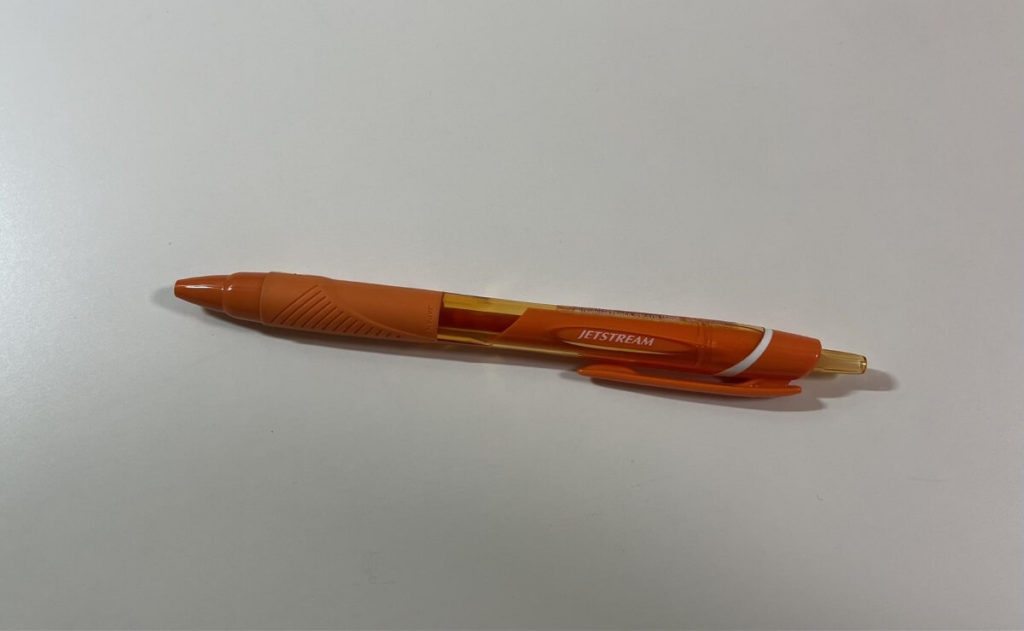
Answer: It’s just an orange pen.
Question 2: What are these?
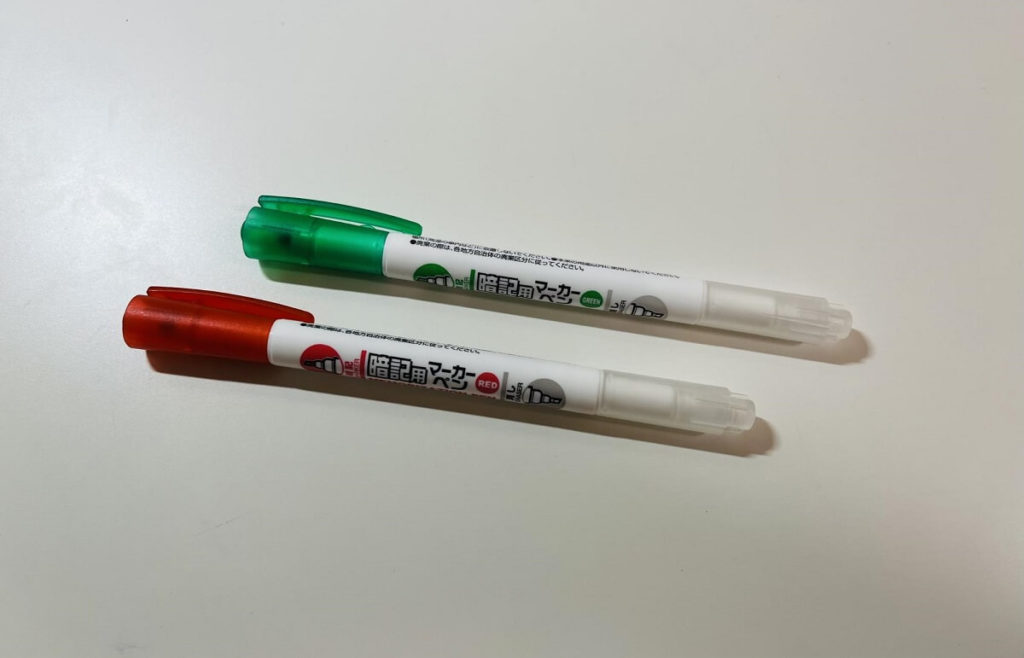
Answer: They are special red and green pens.
Question 3: What’s this?
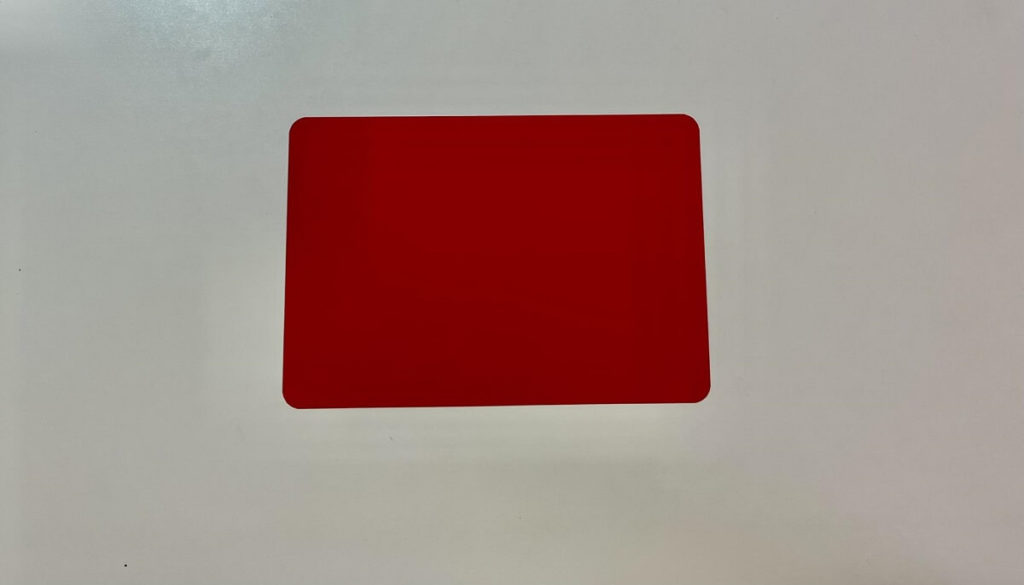
Answer: It’s a magical red sheet.
Have you ever heard about this red sheet? It has been a common item for Japanese people for decades, and I bet all Japanese students have used it at least once in their lives. Why do they use it? Is it helpful? Let’s dive into this magical item!
☆Why?
This red plastic sheet is used to memorize words. It has been helping many Japanese people, especially when they really put their efforts into getting into their first-choice schools. The Japanese education system has been slightly changing for decades, but it’s still important for many students to study hard to enter high-level schools.
They need to learn and acquire tons of things in their limited time. If you have a friend like Doraemon, a well-known Japanese anime robot character who makes our dreams come true, it might be a piece of cake. However, in the real world, we need to create our own ways to get a lot of knowledge.
Here’s the thing. Instead of asking Doraemon, some people make use of this sheet.
☆How?
1. Textbook + Red Sheet
Some textbooks are made to use this sheet and sold with this sheet. Important words, phrases or sentences are written in orange letters, and once you cover them with the red sheet, the orange parts disappear!! For example, take a look at the photo below. In this book, when I cover the left page and see the Japanese on the right page, if I can say all English sentences without seeing them, I feel I was able to perfect this part.

written by Jun Senesac, published by Alc
2. Textbook + Red Sheet + Orange Pen
Surprisingly, if you write something with your ordinary orange pen, the red sheet can make it invisible. Here’s how.
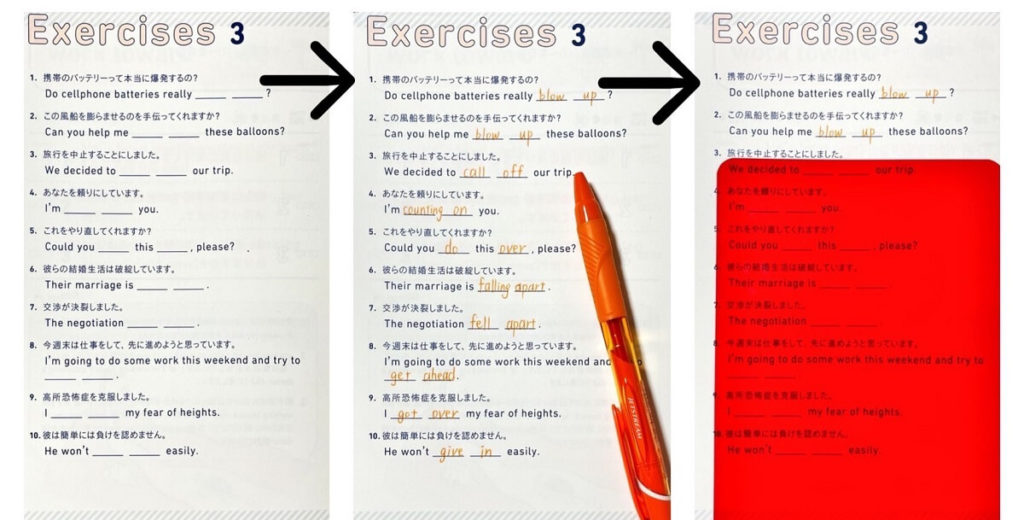
In this textbook, the answers to the questions are on a different page. It’s troublesome to see whether your answer is correct or not back and forth. To solve this issue, the first step is to write down all answers using an orange pen as in the middle picture above. Then you can challenge yourself by answering all the questions and checking your answers right off the bat by just sliding the red sheet to the bottom. It’s so convenient, isn’t it? By the way, it is said that orange pens are the best to use like this, not red pens!
3. Notebook + Orange Pen + Red Sheet
If I call the usage No.2 above “basic,” here is the “advanced” way to use these items. You can make your own reference book.
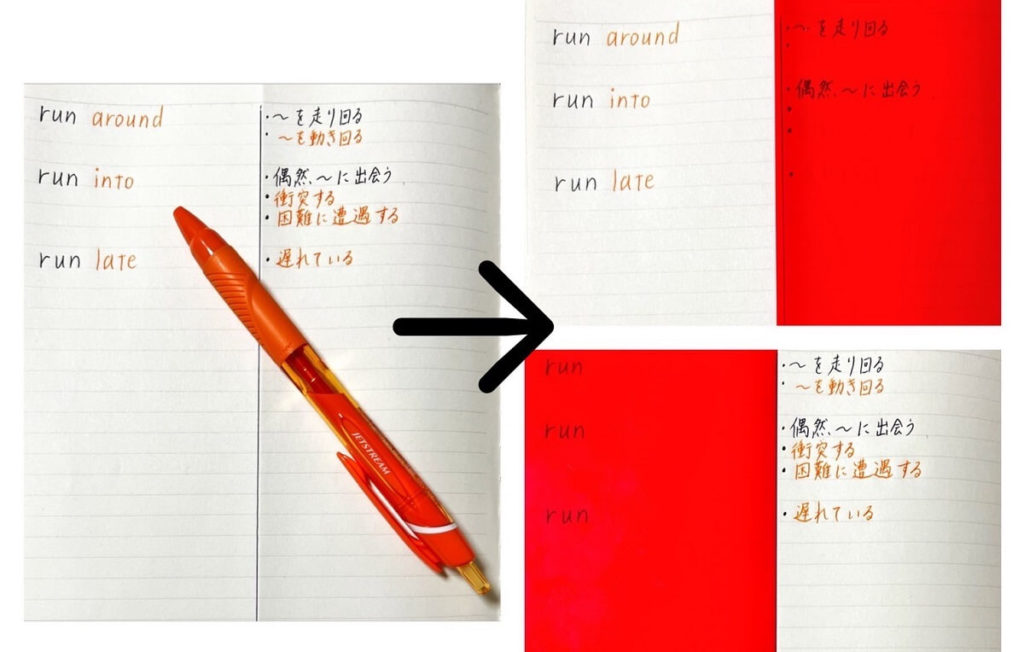
4. Textbook + Red Sheet + Green Pen
Textbook + Green Sheet + Red Pen
This is a magical set for memorizing that we can buy at 100 yen shops.
Can you imagine how to use them? Please look at the photo below.
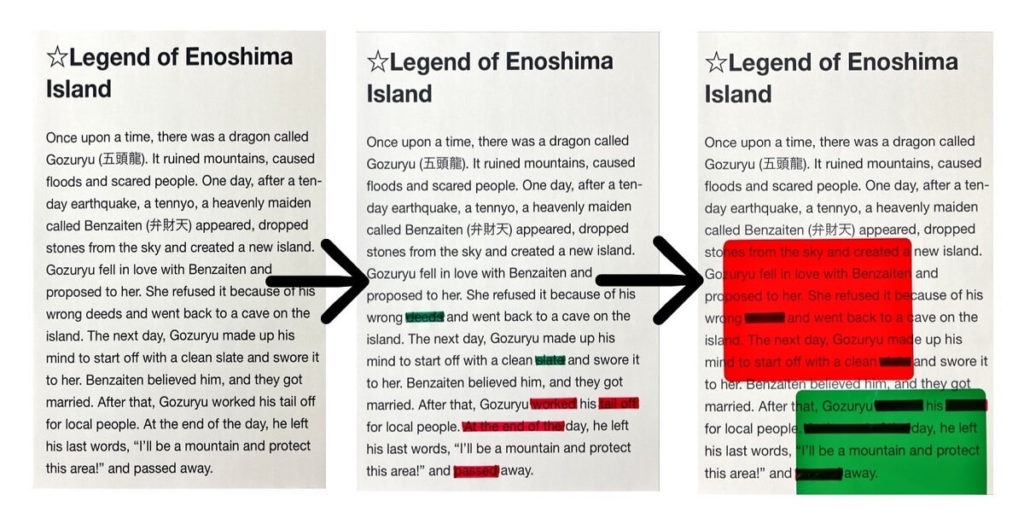
The red sheet erases the letters with the green pen, and the green sheet erases the ones with the red pen. As far as I know, this is useful to memorize the words especially in history textbooks.
Both pens have erasers on the opposite sides, so I tried to erase a part where I used the red pen. Unfortunately, it couldn’t erase perfectly as the photo shows.
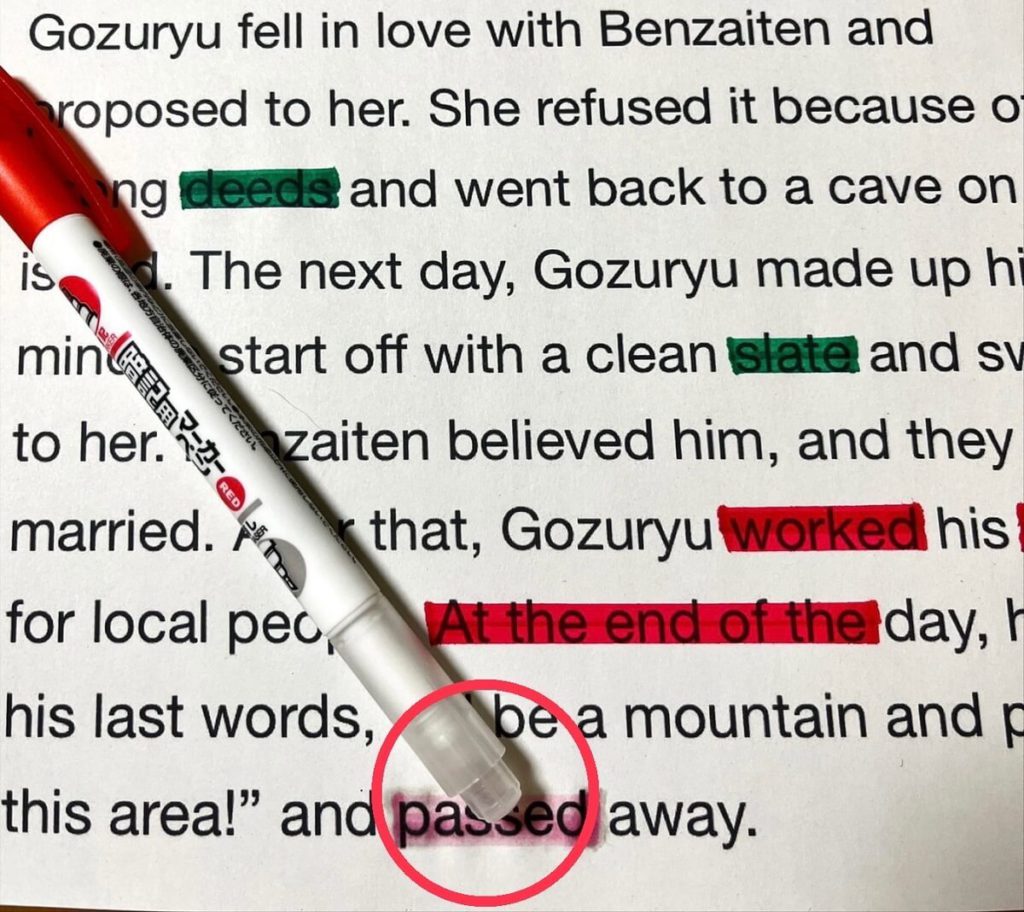
☆ Is it really helpful?
These items have helped many learners in Japan. On the other hand, some people say that just memorizing words is not a good way to acquire something. Of course, how to get knowledge varies from person to person. Whether using these items or not is up to you. However, it’s just 100 yen!! I guess it’s worth trying!
Working for an English language school. My source of energy is our students’ smiles full of curiosity. I love visiting my friends in and outside of Japan.

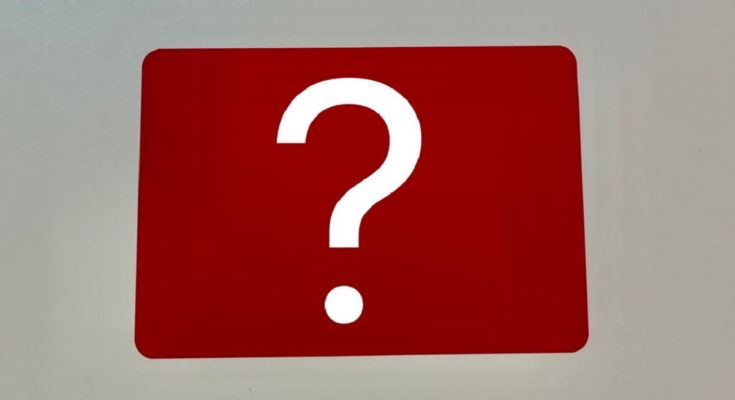
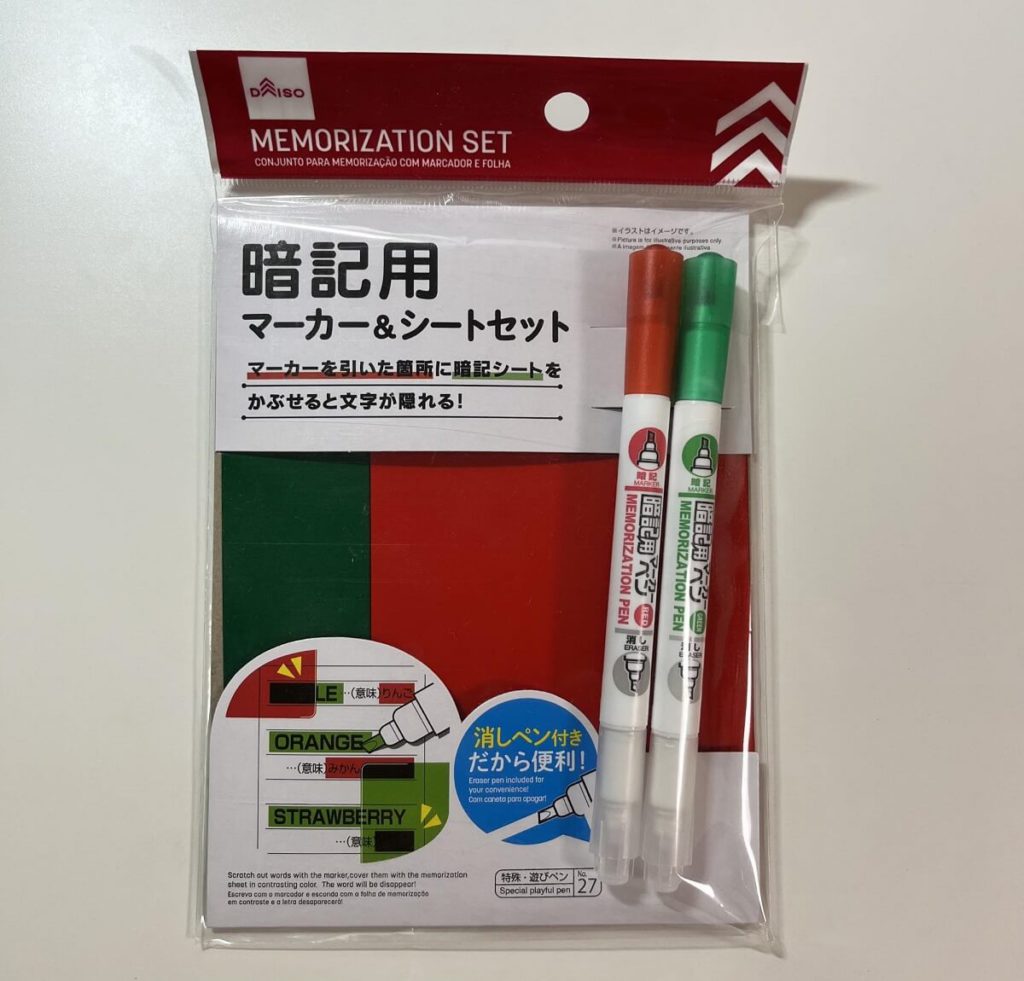



 HTJ has a YouTube page! Check it out
HTJ has a YouTube page! Check it out
Hi, Rei san!
I miss those days when I studied with a red pen and a green sheet.
I don’t think I had a green pen and a red sheet at that time.
My daughter loves to use an orange pen and a red sheet when she memorizes something.
Anyway, I didn’t know we can get 2 pens and 2 sheets with only 100 yen at a Daiso!! Isn’t it too cheap!?
Thanks for reading my article about the magical item!! As you said, the Daiso’s one is too cheap! And they also have red plastic desk pads. They’re full of useful items, aren’t they?!
It’s really magical! Quite interesting to know this strategy in learning. Thanks for sharing!
Thanks for leaving a comment, Dionita! There are a lot of interesting stationery in Japan. I’m happy to know you enjoyed my article!